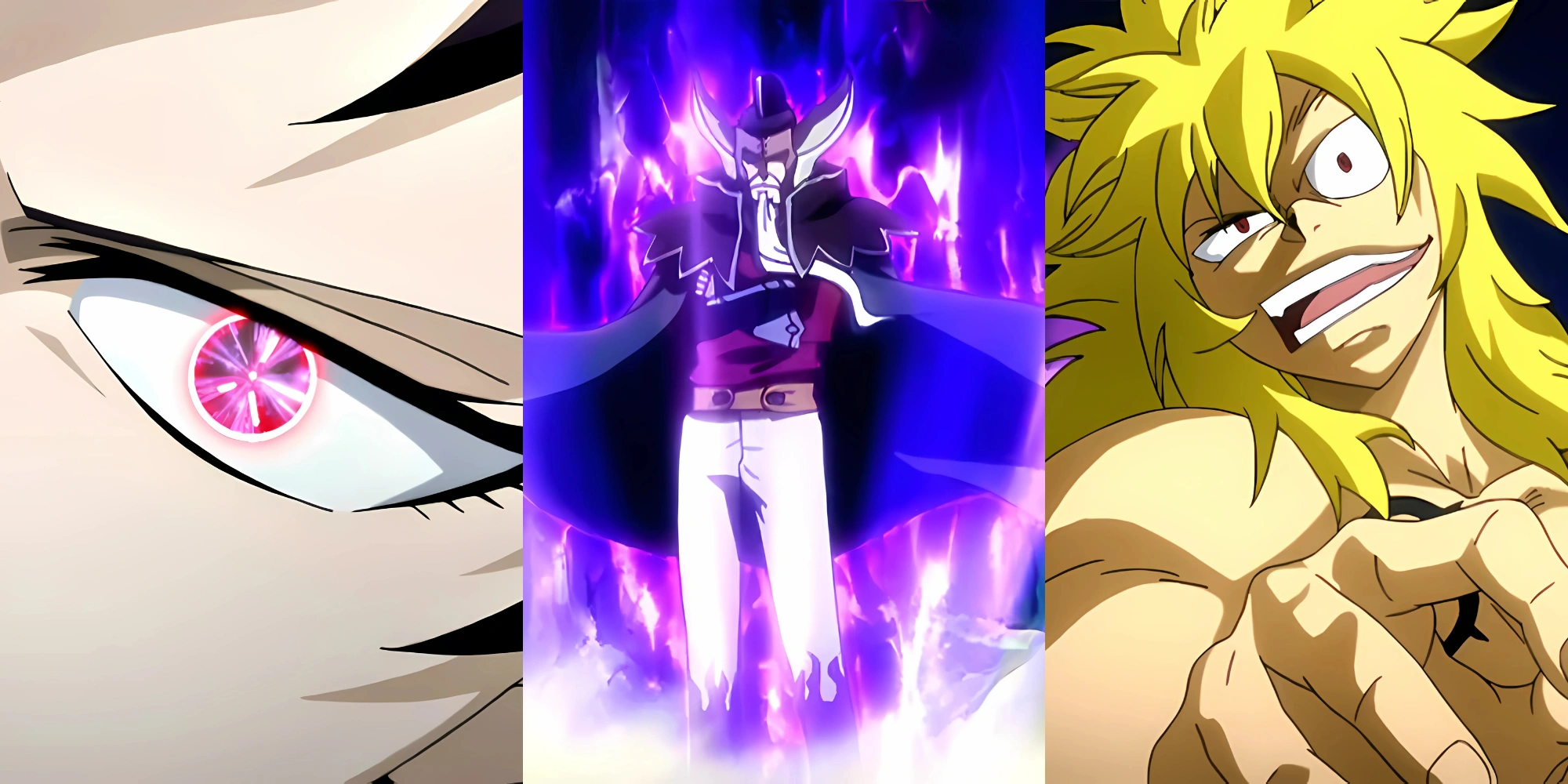Let’s be honest - in a world filled with magic like Fairy Tail, the real question isn’t “who can use magic?” but “who has the coolest magic?” Everyone loves the flashy guild battles and tournament showdowns, but what truly makes my inner magic nerd geek out are those rare, mysterious powers that characters stumble upon in ancient tomes or learn from literal dragons.
These aren’t your everyday fireballs or ice-make spells. Lost Magic represents the absolute pinnacle of magical power in Earth-land – ancient techniques so rare and dangerous that knowledge of them has nearly vanished. They’re the magical equivalent of finding a dinosaur in your backyard – theoretically possible, but highly unlikely.
After rewatching the series (and yes, ugly-crying at certain emotional moments), I’ve compiled the definitive ranking of the rarest Lost Magic types in Fairy Tail. These aren’t just powerful – they’re practically extinct, with sometimes only a single wielder in the entire world. Let’s dive in!
1. Ankhseram Black Magic
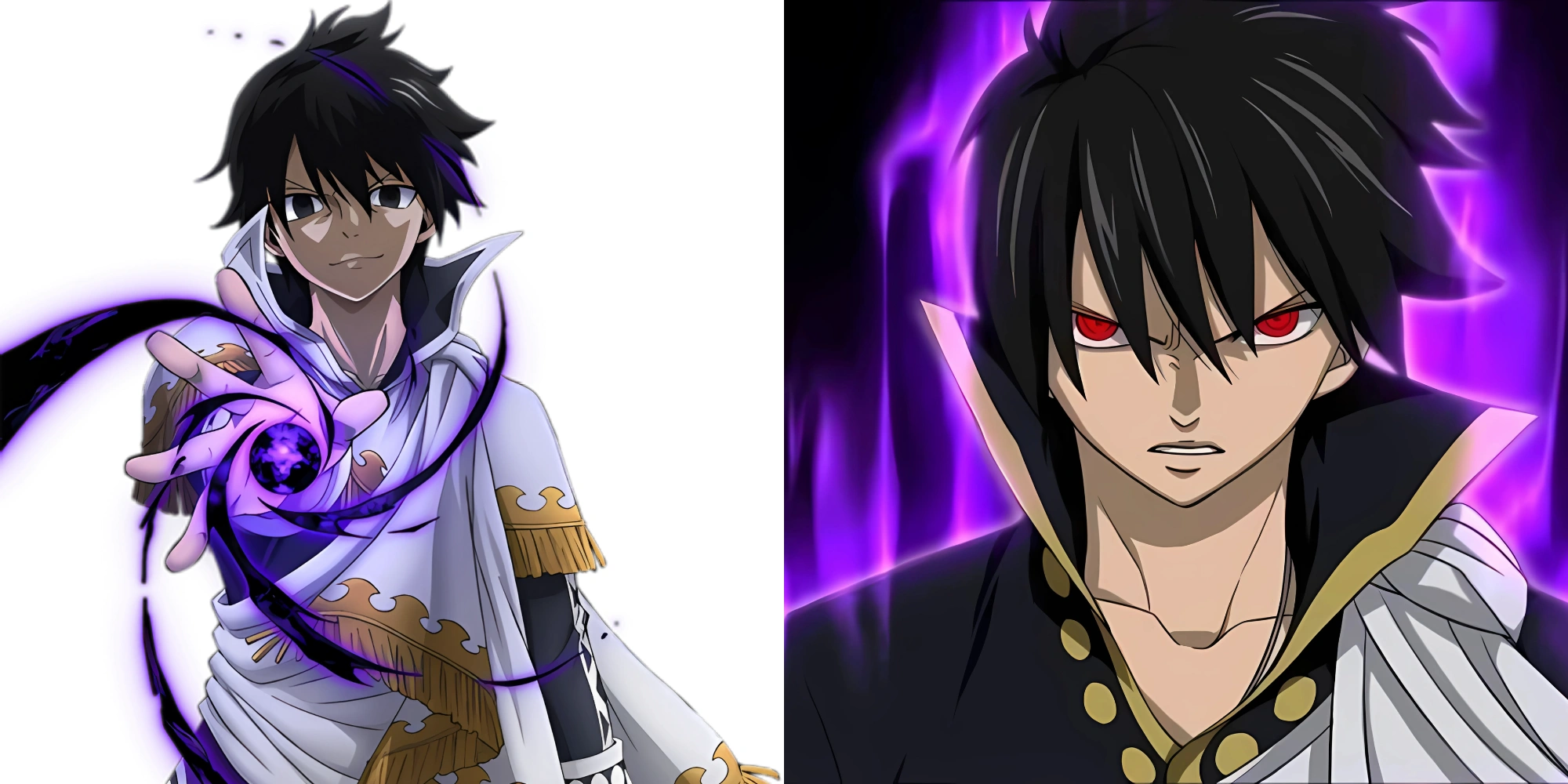
Zeref’s Black Magic isn’t just rare - it’s a divine curse that instantly kills anything near him when he values life, making it both the deadliest and most tragic power in Fairy Tail.
When we talk about rare magic in Fairy Tail, nothing comes close to Zeref’s Black Magic. Technically, it’s not even something you can learn – it’s a divine curse inflicted by the god Ankhseram on those who mess with the boundaries between life and death.
The curse works through a twisted contradiction: when Zeref values life and feels positive emotions, everything around him dies instantly. Plants wither, animals drop dead, and humans don’t stand a chance. Only when he stops caring about life can he control this power. Oh, and it also makes him immortal, so he can’t even escape through death. Talk about a punishment!
What makes Zeref’s black magic absolutely unique is that only two people in the entire series have it: Zeref himself (cursed 400 years ago for trying to resurrect his brother) and Mavis Vermillion (who accidentally took a life while using an incomplete Black Magic spell). You can’t learn this power from a book or a teacher – you literally have to anger a god, which nobody in their right mind would intentionally do.
The fact that this magic connects the series’ primary antagonist and Fairy Tail’s founder through a shared curse makes it not just the rarest magic, but also one of the most narratively significant.
2. Age Seal
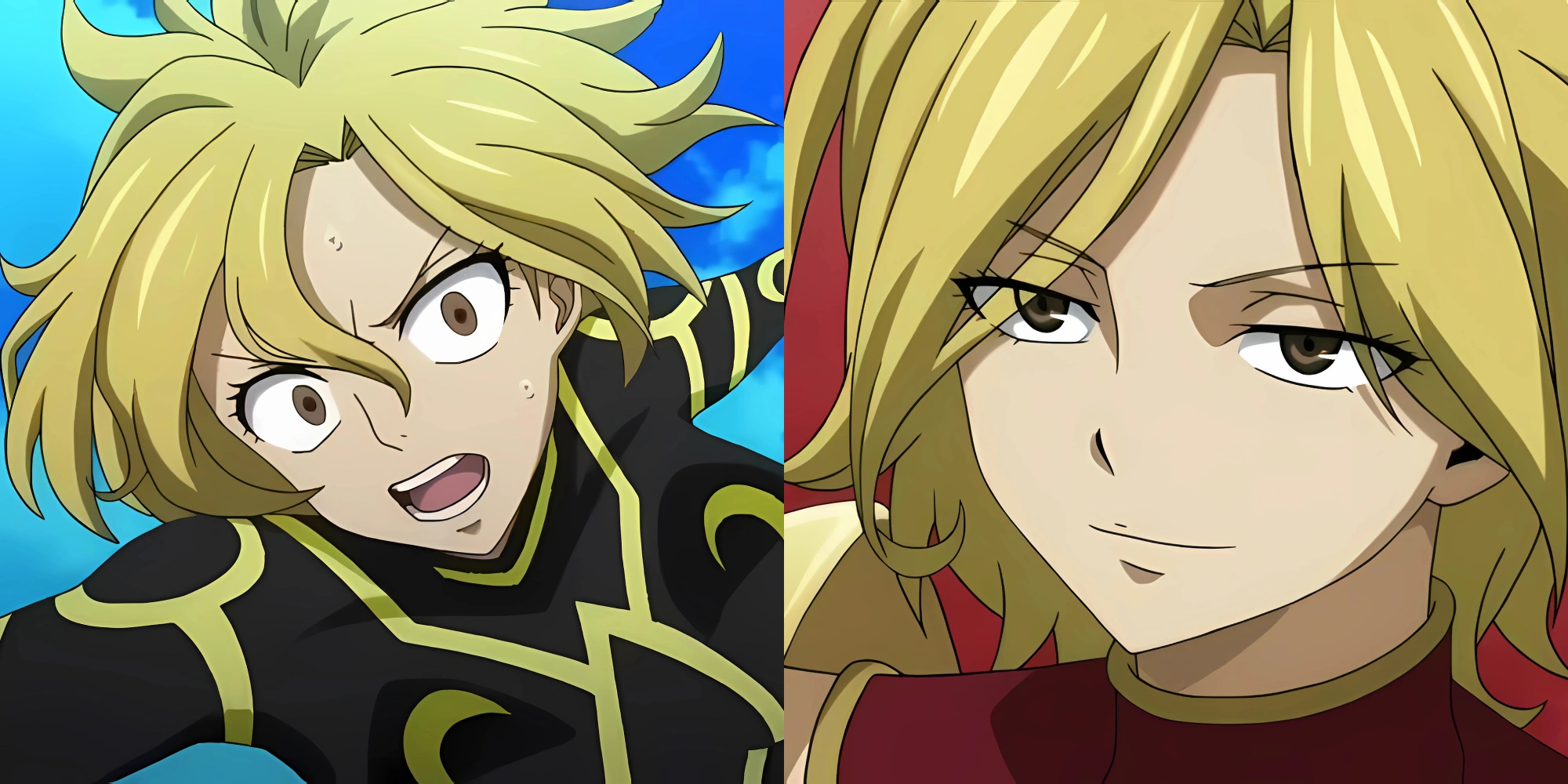
Dimaria’s Age Seal allows her to completely freeze time for everyone except herself, essentially making her untouchable to anyone who can’t manipulate the fabric of time itself.
Imagine being able to stop time completely for everyone except yourself. That’s exactly what Dimaria Yesta’s Age Seal does, and what lands it at number two on our list.
With a simple click of her teeth, Dimaria creates a “world of frozen time” where she can move freely while everyone else is completely immobilized. She can attack, reposition, or just mess with her opponents, and they can’t do a thing about it. From an outside perspective, she appears to teleport or react instantaneously.
What makes Age Seal particularly fascinating is that it’s tied to her Take Over magic, allowing her to channel the power of the actual Time God, Chronos. This divine connection puts Age Seal in a class of its own. The only things shown to counter it are Ultear’s time magic intervention from beyond the grave and Natsu’s E.N.D. form, suggesting it takes either another time magic user or demonic power to overcome.
With Dimaria being the one and only user of this magic in the entire series, Age Seal firmly secures its place as the second rarest Lost Magic in Fairy Tail.
3. Arc of Time
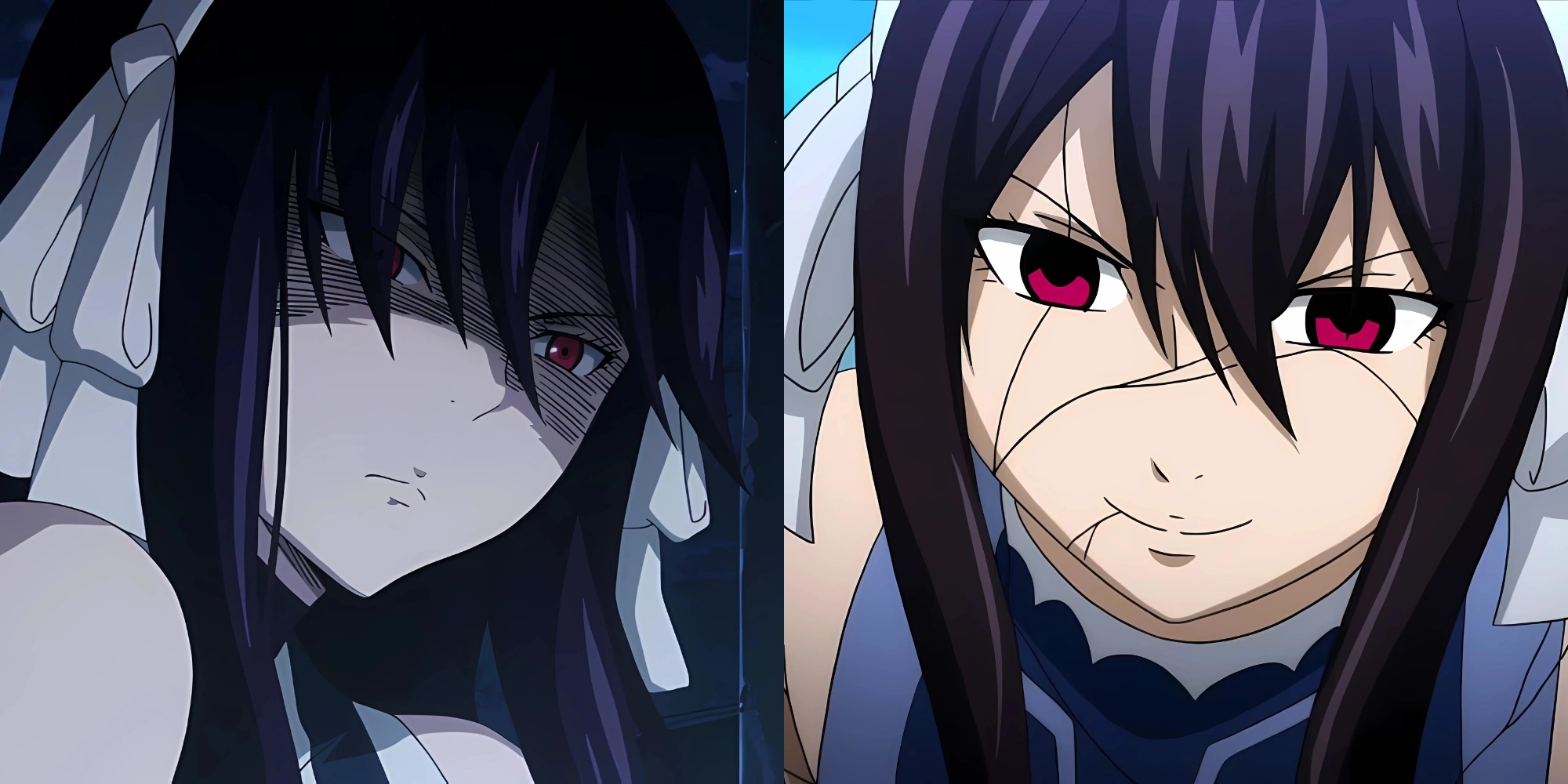
Ultear’s time magic allows her to control the ’time’ of objects, accelerating decay, restoring damage, or even rewinding time itself at the cost of her own lifespan.
Ultear Milkovich’s Arc of Time magic is a perfect example of how Lost Magic can shape both a character’s abilities and their entire story arc. This rare form of time manipulation allows her to control the “time” of non-living objects and plants – restoring damaged items, accelerating decay, or even viewing potential futures of objects through her “Parallel Worlds” spell.
While she can’t directly manipulate the time of sentient beings (with some exceptions), Ultear found creative applications like forcibly unlocking a person’s Second Origin (hidden magic container) and eventually casting Last Ages – a spell that rewound time for the entire world at the cost of her own lifespan.
What makes Arc of Time particularly special is Ultear’s journey to master it. After years studying ancient texts and pushing her magical limits, she became the only person in the modern era capable of wielding this power. Her sacrifice during the Dragon King Festival, where she cast Last Ages and aged herself to near-death to save countless lives, demonstrates both the immense power and terrible cost of this forgotten magic.
The Ultear time magic plotline is one of the most emotionally impactful in the series, and the fact that she remains its sole practitioner cements Arc of Time’s place among the rarest magical abilities in Earth-land.
4. Crush
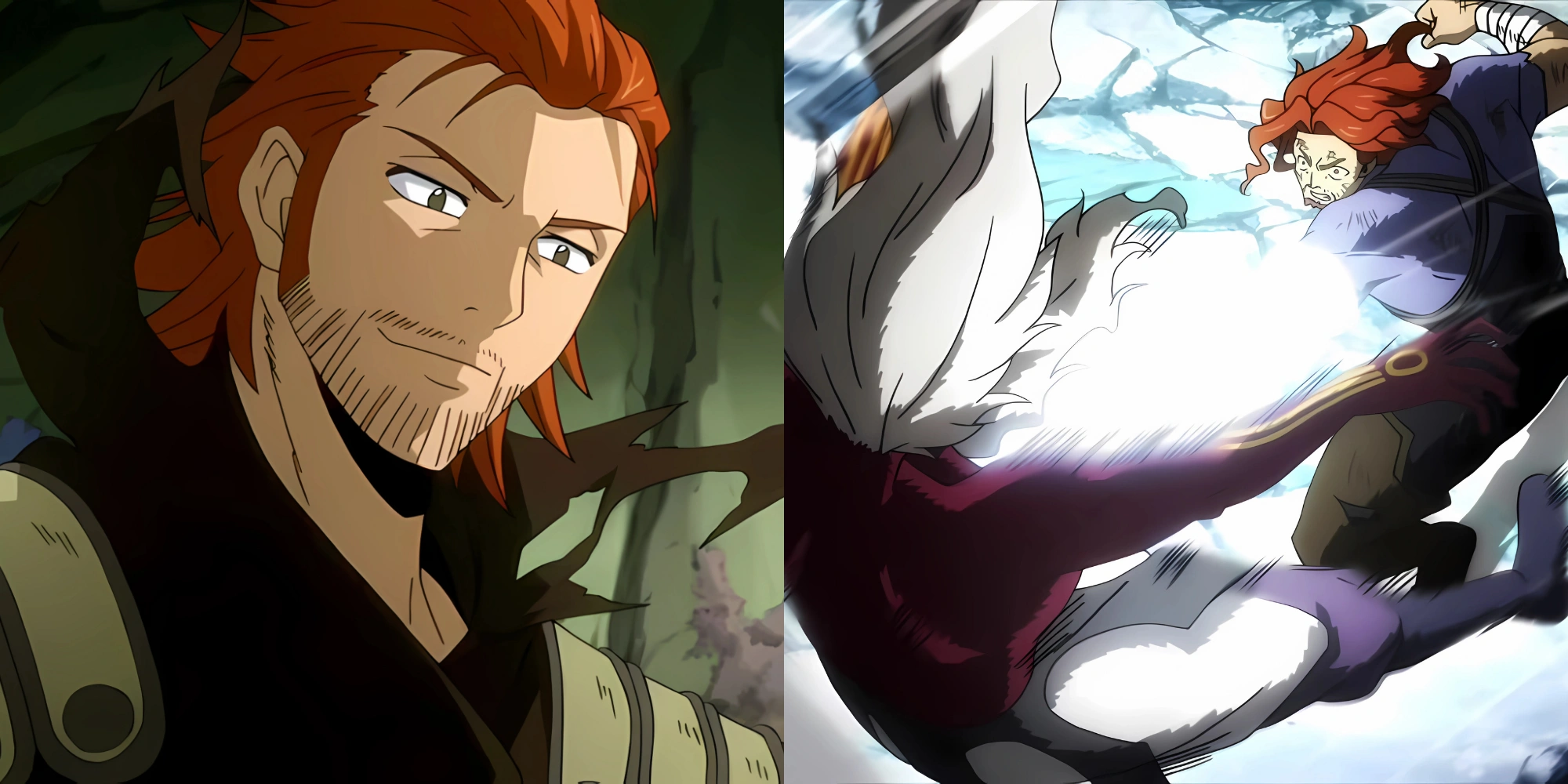
Gildarts’ Crush magic can literally disassemble anything—physical objects, magic attacks, and even the ground beneath his feet—into countless tiny cubes with just a touch.
When Gildarts Clive walks through Magnolia and the entire town literally rearranges itself to give him a clear path, that’s not just the citizens showing respect – it’s acknowledging the raw destructive potential of his Crush magic.
This incredibly powerful Lost Magic allows Gildarts to disassemble anything he touches into countless smaller pieces (usually cube-shaped). And I mean anything – physical objects, magical attacks, even the very ground beneath his feet. This makes him virtually untouchable in combat, as he can simply “crush” any attack directed his way.
What’s particularly interesting about Crush is how it reflects Gildarts’ character. Like the man himself, the magic is straightforward yet overwhelmingly powerful. There’s no complicated incantation or setup – just pure, concentrated magical strength that can reduce mountains to rubble.
With Gildarts as the only known user, Crush remains one of the most visually distinctive and rare magical abilities in the series. The fact that even Natsu, the guild’s resident battle-maniac, recognizes when he’s completely outmatched by this magic speaks volumes about its fearsome reputation.
5. Memory-Make
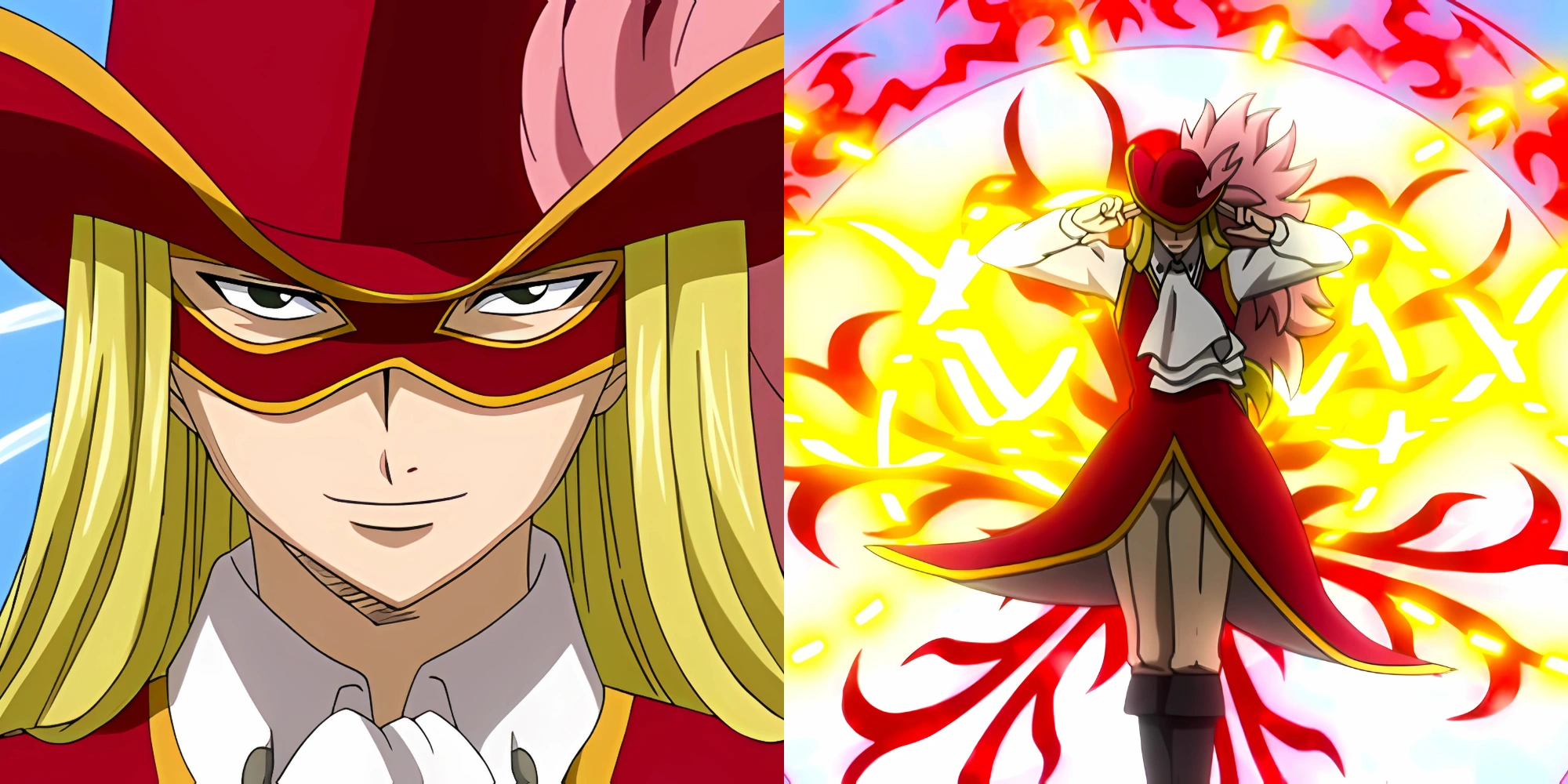
Rufus’s Memory-Make allows him to memorize any magic he witnesses and then recreate or combine those spells, essentially turning his mind into a living library of stolen techniques.
Rufus Lore’s Memory-Make magic is like having a photographic memory for spells. This unique form of Molding Magic allows him to observe, memorize, and then recreate any magic he witnesses – often combining different memorized techniques to create entirely new spells.
During the Grand Magic Games, we saw Rufus memorize and recreate elements like lightning (likely from his guildmate Orga) and ice after observing Gray. What makes this magic particularly dangerous is that it improves with every battle, as the user’s “library” of memorized spells grows continuously.
While sometimes classified as Ancient Magic rather than explicitly Lost Magic, Memory-Make’s single user and incredible versatility earn it a spot on this list. The ability to potentially replicate aspects of even complex magics (limited only by the user’s understanding and magical power) makes it uniquely adaptable.
Rufus’s defeat by Gray was particularly satisfying because it demonstrated that even a magic capable of memorizing and countering various techniques can be overcome by someone who continuously creates new approaches – a fitting thematic victory for Fairy Tail’s spirit of creativity and growth.
6. Devil Slayer Magic
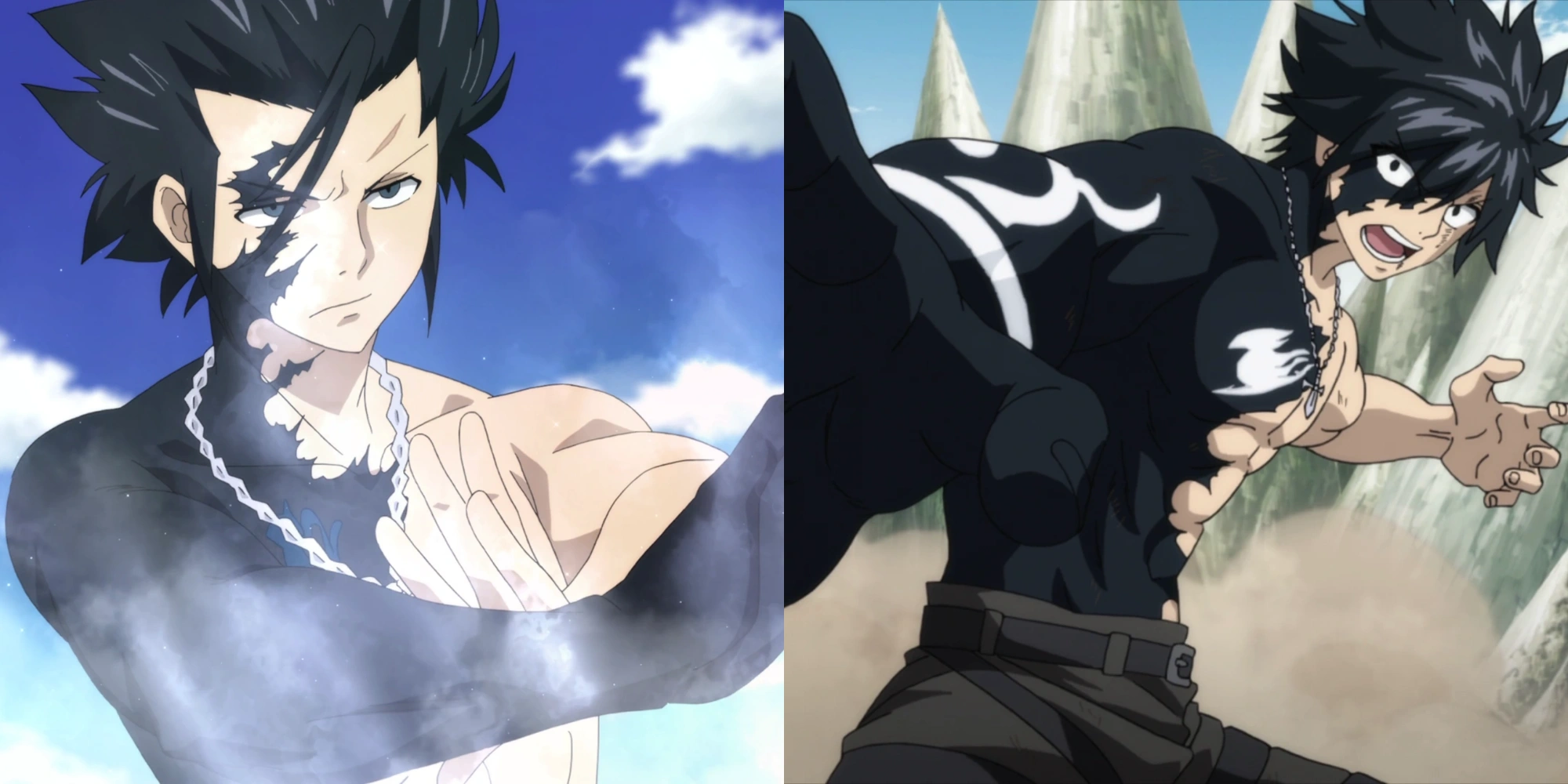
Devil Slayer Magic gives Gray the power to combat demons with specialized ice techniques, but risks transforming him into a demon himself if overused.
Devil Slayer Magic earns its place as one of the rarest magical forms in Fairy Tail, with only three known users throughout the series: Silver Fullbuster, Gray Fullbuster, and the Etherious Bloodman.
This ancient Lost Magic was specifically created to combat demons (particularly Zeref’s creations, the Etherious). Users gain immunity to demonic Curses, can consume their element (like ice for Gray), and develop an instinctive ability to identify demons. The magic manifests with distinctive markings that spread across the user’s body.
What makes Devil Slayer particularly fascinating is its dangerous side effect: Demonization. Overuse causes the wielder to take on demonic characteristics, potentially losing their sanity while gaining immunity to powerful Curses like Memento Mori. We see this struggle play out dramatically with Gray, who must constantly balance tapping into this power against the risk of losing himself.
The acquisition methods are equally perilous. Silver learned it either from a demon or through research related to Tartaros, while Gray inherited it directly from his father. Learning it from sources like the Books of Zeref involves exposure to highly poisonous Magic Barrier Particles, making it extraordinarily difficult to obtain without a direct teacher.
In the dragon slayer vs god slayer vs devil slayer comparison, Devil Slayer magic remains the most mysterious and dangerous to its own user, adding to its extreme rarity.
7. God Slayer Magic

God Slayer Magic manifests as black versions of elemental attacks—like Zancrow’s black flames or Sherria’s black wind—and can consume Dragon Slayer magic while remaining immune to being consumed in return.
God Slayer Magic stands as one of the most visually distinctive Lost Magics in Fairy Tail, instantly recognizable by the black coloration of its elemental attacks. Designed to slay gods or divine beings, this ancient form of magic has only three known practitioners: Zancrow (Flame), Orga Nanagear (Lightning), and Sherria Blendy (Sky).
What makes God Slayer magic particularly interesting in the power hierarchy is its relationship to Dragon Slayer magic. God Slayers can consume the same element produced by Dragon Slayers to replenish their power, but Dragon Slayers cannot do the reverse. This gives God Slayers a theoretical edge in direct elemental confrontations, though the series shows that skill and determination often matter more than inherent magical advantages.
The acquisition methods vary – Zancrow was taught by Hades/Precht, Sherria learned from ancient books, and Orga’s training remains a mystery. This variety in learning paths, combined with the distinctive black elemental effect, gives God Slayer magic a unique place in Fairy Tail’s magic system.
When comparing dragon slayer vs god slayer abilities, the god variant often appears more refined and controlled, perhaps reflecting the difference between divine precision and draconic raw power. Sherria’s healing abilities in particular showcase a versatility that rivals Wendy’s sky magic, though with different limitations and strengths.
8. Dragon Slayer Magic
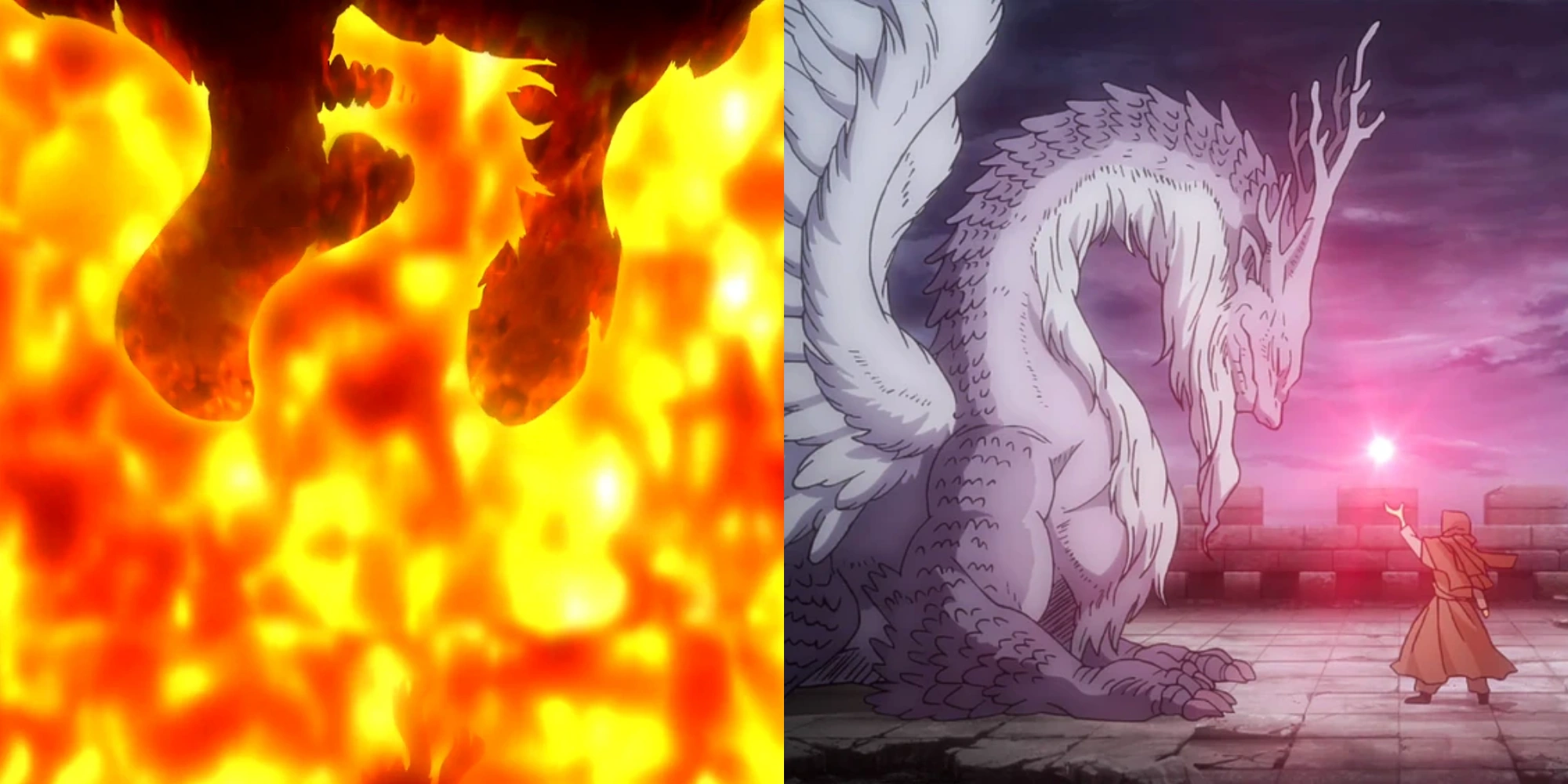
Dragon Slayer Magic grants users like Natsu, Gajeel, and Wendy elemental powers based on their dragon teachers, along with enhanced senses and the ability to actually consume their elements for power.
Dragon Slayer Magic earns its place on this list despite becoming increasingly common as the series progresses. Originally one of the rarest magical forms in Earth-land, this ancient Lost Magic was developed 400 years ago specifically to combat dragons.
What makes Dragon Slayer magic special is how it fundamentally changes its users’ physiology. Slayers gain enhanced senses, tremendous durability, and the ability to consume their element (like Natsu with fire or Gajeel with iron) to replenish their magic power. They also share a common weakness – debilitating motion sickness – that humanizes even the most powerful slayers.
The magic comes in multiple “generations” based on how it was acquired:
- First Generation (Natsu, Gajeel, Wendy): Taught directly by dragons
- Second Generation (Laxus, Erik/Cobra): Gained through lacrima implantation
- Third Generation (Sting, Rogue): Both taught by dragons and implanted with lacrima
- Fourth and Fifth Generations: Introduced in later arcs through artificial means
What’s particularly interesting is the risk of Dragonization – the phenomenon where overuse transforms the slayer into a dragon themselves, as happened with Acnologia and was beginning to affect Natsu and others during certain power-ups.
While Dragon Slayer Magic began as extraordinarily rare, by the end of the series and into the 100 Years Quest sequel, the number of users expanded significantly. This places it as the “least rare” on our list of rare magics, but still firmly within the Lost Magic category due to its ancient origins, immense power, and the difficulty of obtaining it without direct draconic tutelage.
Fairy Tail Lost Magic FAQ
What exactly makes a magic 'lost' in Fairy Tail?
A “lost” magic in Fairy Tail isn’t just any powerful spell—it specifically refers to magic that has nearly vanished from the world. Magic becomes “lost” for several key reasons:
First, many lost magics are incredibly dangerous to learn or use. Take Dragon Slayer magic—the training is so intense that you basically need an actual dragon as a teacher (or a dragon lacrima surgically implanted in your body).
Second, some lost magics carry terrible side effects or risks. Devil Slayer magic can literally turn you into a demon if overused. Zeref’s Black Magic comes with a curse that kills everything around you when you feel love. These consequences naturally limit who’s willing to pursue such power.
Third, historical events like the Dragon King Festival wiped out many knowledge-bearers. When dragons nearly went extinct, they took their teaching with them, making Dragon Slayer magic increasingly rare.
Finally, some lost magics require unique circumstances to acquire. Age Seal requires channeling a literal god. Arc of Time demanded years of studying ancient texts that few could access or understand.
What separates truly lost magic from just “uncommon” magic is this combination of extreme rarity, high risk/difficulty, and often ancient origins tied to foundational aspects of Earth-land’s magical system.
How does Jellal's Heavenly Body Magic compare to other lost magic?
Jellal’s Heavenly Body Magic occupies an interesting position in Fairy Tail’s magical hierarchy. While incredibly powerful, it’s not explicitly classified as Lost Magic in the same way as Dragon Slayer or Arc of Time magic.
Heavenly Body Magic draws power from celestial bodies, allowing Jellal to harness the energy of stars and planets. His Meteor spell grants him phenomenal speed, while Grand Chariot unleashes a devastating attack with the power of multiple stars. His ultimate spell, Sema, can summon an actual meteor—powerful enough to potentially destroy an island!
What makes this magic particularly interesting is that while not classified as “Lost,” it appears to be extremely rare. Jellal is the only practitioner we see in the entire series, suggesting it might be on the borderline between uncommon magic and true Lost Magic.
In terms of raw power, Jellal’s magic certainly competes with established Lost Magics. During the Grand Magic Games, even Jura (one of the Ten Wizard Saints) was in awe of Jellal’s abilities. His Heavenly Body Magic has allowed him to contend with multiple Dragon Slayers simultaneously and even briefly hold his own against Acnologia.
The distinction may come down to accessibility rather than power—perhaps Heavenly Body Magic could theoretically be learned by others with the right training, whereas true Lost Magics have fundamental barriers to acquisition beyond mere difficulty.
Why is Dragon Slayer magic more common than other Lost Magics?
Dragon Slayer magic presents what I like to call the “Slayer Magic Paradox”—it’s officially classified as Lost Magic, yet by the end of the series, we’ve got Dragon Slayers practically holding conventions! This apparent contradiction has several interesting explanations:
First, there’s the narrative focus. Dragon Slayer magic is central to the plot, with our protagonist Natsu being a Fire Dragon Slayer. Naturally, the story introduces more characters with similar abilities as the world expands. It’s a classic case of the Baader-Meinhof phenomenon—once you start looking for Dragon Slayers, you find them everywhere.
Second, there’s historical context. During the 400-year backstory, dragons deliberately created multiple Dragon Slayers as part of the Eclipse Plan. Figures like Irene Belserion pioneered Dragon Slayer magic specifically to equip humans against dragons, suggesting there was once a period where this magic was actively taught.
Third, there’s artificial proliferation. After the original Dragon Slayers, humans found ways to create more through dragon lacrimas (Second Generation like Laxus) and later through even more artificial means (Fourth and Fifth Generations in the sequel). Each new method increased the potential user base.
Finally, there’s survivorship bias. The abilities that help you survive tend to persist—Dragon Slayers are notoriously difficult to kill, so they stick around while users of equally rare but less defensive magics might perish more easily.
Despite all this, Dragon Slayer magic remains technically “Lost” because the original, pure method of learning it (directly from dragons) is nearly impossible in the current era, with most dragons gone or sealed away.
How does Wendy's sky magic differ from other Dragon Slayer types?
Wendy’s Sky Dragon Slayer magic stands apart from other Dragon Slayer types in several fascinating ways, making her unique even among this rare magical category.
Most obviously, Wendy’s magic has a strong support component that other Dragon Slayers lack. While Natsu, Gajeel, and others focus almost exclusively on offense, Wendy can cast powerful healing spells like Sky Dragon’s Healing Spell and enhancement magic like Vernier (speed), Arms (attack power), and Armor (defense). This versatility makes her invaluable to any team.
Wendy’s magic also interacts differently with her physiology. While all Dragon Slayers can consume their element, Wendy literally breathes air constantly—her element is everywhere. This gives her a unique relationship with her power source, though she specifically needs clean, unpolluted air to replenish her magical energy.
The offensive side of Sky Dragon Slayer magic is also distinctive. Rather than direct damage like Natsu’s flames or Gajeel’s iron, Wendy’s attacks often manipulate air pressure and wind currents. Her Sky Dragon’s Roar creates destructive cyclones, and her Sky Dragon’s Wing Attack generates blade-like air currents.
Perhaps most interestingly, Wendy’s magic has unique synergy with other Slayer types. Her healing can restore other Dragon Slayers’ strength, and her support spells can enhance their abilities. This cooperative potential reflects her gentle personality compared to the more aggressive nature of typical Dragon Slayers.
When Wendy accesses Dragon Force, the transformation emphasizes her connection to the sky through feather-like scales and pink/white coloration, visually distinguishing her from the more predatory appearances of other Dragon Slayers in their powered-up states.
What makes Gajeel's iron dragon slayer abilities unique?
Gajeel’s Iron Dragon Slayer magic represents one of the most versatile and physically adaptable forms of Dragon Slayer magic in the series. While all Dragon Slayers can consume their element, Gajeel takes transformation to another level entirely.
The most distinctive aspect of Gajeel’s iron dragon slayer abilities is his extreme body modification. Unlike Natsu, who primarily projects flames, Gajeel can transform his limbs into various iron weapons: swords, clubs, spears, and even a chainsaw! This shapeshifting capability gives him unparalleled tactical flexibility in combat.
Gajeel’s magic also interacts uniquely with different metal types. After consuming Shadowgear’s solid script iron, he comments that it doesn’t taste very good. Later, after eating metallic trace elements, he develops an temporary immunity to lightning. Most impressively, after consuming magical barrier particles infused with anti-magic properties, he develops his dual-element Iron Shadow Dragon Mode.
His Dragon’s Roar is particularly distinctive—instead of a concentrated blast like Natsu’s fire or Wendy’s air, Gajeel’s Iron Dragon’s Roar shoots metal shards that shred opponents, making it more effective against multiple targets.
What truly makes Gajeel fascinating is how his magic reflects his character evolution. He starts as “Black Steel” Gajeel with rough, brutal iron attacks. As he grows emotionally, his magic evolves too—culminating in his ultimate Iron Shadow Dragon Mode that combines his original power with a new element, mirroring how he integrated his rough past with his new Fairy Tail identity.
Even his Dragon Force manifestation in the final season shows this growth, with smoother, more refined metal scales than his earlier, rougher transformations.
